Thursday, 26th September 2019 – Freiburg im Breisgau
After another good breakfast we set off to go and take a look at the city of Freiburg im Breisgau and this time we would again leave the car behind. Using the Konus card that all hotel guests are given, we could catch one of the half hourly buses from Glottertal down to the nearest railway station, where we could catch a train to Freiburg all for free.

The bus arrived on time, we hopped on, and we were soon at Denzlingen, 8km north of Freiburg. The bus stop was next to the railway station, and the train arrived within 10 minutes. Further research suggested that the buses ran from around 05:00 to just after midnight, meaning that if you lived in Glottertal, or further up the valley, you could get a job in the city and not need a car to get to it. Try that in your average British small town. We have three buses a day to our nearest major town and just two back again and the earliest one leaves at around 07:00 and the last one back is done by 18:00. Don’t get me started. We could also have used the Freiburg trams but we didn’t need to. We were close enough to walk straight into the middle of the old town.

Freiburg was founded by Konrad and Duke Berthold III of Zähringen in 1120 as a free market town, hence its name, which likely translates best as “fortified town of free citizens”. Strategically located as it is on the juncture of trade routes between the Mediterranean and the North Sea, as well as the Rhine and the Danube, it was well sited to thrivem and by 1200 the populatoin stood at around 6000 people. It was then that the last duke of Zähringen, Bertold V, oversaw the building of Freiburg cathedral to replace a parish church with something altogether more impressive.

It started out as a Romanesque style building but was not completed until 1513, by which time it had taken on a distinctly Gothic appearance. During that time the city had changed hands after a dispute between the count, Egino I, and the city council, who did not trust the new nobles and thus ensured their rights and duties were recorded for posterity. When Count Egino II attempted to increase taxes and to limit the citizens’ freedom, that was it. The citizens revolted and destroyed the count’s castle, the count called on his brother-in-law the Bishop of Strasbourg, Konradius von Lichtenberg, for help, and the bishop and his army marched on the city.

Legend has it that a butcher named Hauri stabbed the Bishop to death on 29 July 1299, which ended up with the citizens of Freiburg being forced to pay an fine of 300 silver marks to the count for the next 69 years. After the counts again tried to occupy the city (in 1366) the citizens really had had enough of their lords and they bought their independence and turned to the Habsburgs for protection. This worked out far better and after most of the noblity was wiped out in the battle of Sempach (1386) the Schnewlin family took control of the city until the guildsmen revolted and took charge, becoming a powerful force locally. The guilds became more powerful than the patricians by 1389, aided by the exploitation of silver mines in Mount Schauinsland.

The silver made Freiburg one of the richest cities in Europe, and by 1327 Freiburg was minting its own coins, the Rappenpfennigs. By 1377 the cities of Freiburg, Basel, Colmar, and Breisach had entered into a monetary alliance, the Genossenschaft des Rappenpfennigs, which enabled commerce between the cities and lasted until the end of the 16th Century. During this time, a university was founded, in 1457 when Albrecht VI, Regent of Further Austria, established Albert-Ludwigs-Universität, one of Germany’s oldest universities.

In 1498, Emperor Maximilian I held a Reichstag in Freiburg. In 1520, the city ratified a set of legal reforms, widely considered the most progressive of the time. The aim was to find a balance between city traditions and old Roman Law. The reforms were well received, especially the sections dealing with civil process law, punishment, and the city’s constitution. In 1520 Freiburg opted not to join in the Reformation, remaining Catholic, which is presumably why Erasmus (Desiderius Erasmus of Rotterdam (1466-1536), Dutch Renaissance humanist and theologian) Erasmus moved to the city after Basel accepted the Reformation.

It was heavily damaged by the Thirty Years’ War and by the end of it a population of 14,000 citizens had been reduced to a mere 2000 and further switches in lordship didn;t help with the city having been variously under the control of the Austrians, the French, the Swedish, the Spanish, and various members of the German Confederation. Between 1648 and 1805, when the city was not under French occupation, it was the administrative headquarters of Further Austria, the Hapsburg territories in the southwest of Germany. In 1805, the city, together with the Breisgau and Ortenau areas, became part of Baden.

On 22 October 1940, the Nazi Gauleiter of Baden, Robert Heinrich Wagner, ordered the deportation of all of Baden’s and 350 of Freiburg’s Jewish population, first to Camp Gurs, where many died, and later to Auschwitz where almost all were murdered. The city has a memorial in the form of the ‘footprint’ in marble on the site of the city’s original synagogue, while the pavements have brass plates as memorials to individual victims outside their former residences.

Freiburg’s turbulent history didn’t end then either, and it was heavily bombed by both sides in World War II. In 1940 the Luftwaffe mistakenly dropped 60 bombs on Freiburg near the railway station, killing 57 people and in 1944 a raid by the RAF destroyed most of the city centre, the Münster remaining almost miraculously untouched. In 1945 it was occupied by the French but but by the end of the year it was made the seat of government for the German state of Badenia, and merged into Baden-Württemberg in 1952. The French Army only finally left in 1991.

The vacating of the French Army base provided the city with the opportunity to build a new neighborhood, Vauban, begun in the 1990s as a “sustainable model district” with solar power supplied to most households. Since then Freiburg has become known as an eco-city with a strong Green Party presence in its governance. In 1995 the city council adopted a resolution that it would permit construction only of “low-energy buildings” on municipal land, and all new buildings must comply with certain “low energy” specifications and is now pretty much entirely powered using renewable energy.

The city has an unusual system of gutters (Bächle) that run all through the centre. Formerly they were used to provide water to fight fires and feed livestock, but now they seem to act as trap for unwary visitors to fall into. The water in them comes from the river and they were not intended to be used for sewage; any such infraction would result in a severe penalty. Apparently tourists should be wary because it is said that if you accidentally steps into one, you will marry a Freiburger.

We started at the Tourist Information office in the old Rathaus, and then headed towards the cathedral. On arriving in Münsterplatz, the city’s largest square, where there is a farmers market every day of the week except Sundays. The market was in full swing when we arrived and I indulged and bought a pack of dried chanterelles, as well as pack of powdered wild mushrooms. Now all I need to do is decide what to do with them.

We decided that as it was damp and drizzly and we didn’t intend to have lunch, it was probably time for coffee and maybe cake. An ice cream parlour overlooking the cathedral, with tables on an upper floor, was just what we needed. And given we were in the Black Forest then a slice of Black Forest gateau was probably the only way to go. It would have been rude not to!

Suitably refreshed we dived into the cathedral only to find that the choir and the side-chapels were all closed off until later in the day. We would have to temporarily make do with what we could see inside and out and return a little later in the day. Both inside and out are of interest, so this really wasn’t a hardship. The entrance is netted over, I assume to fend off pigeons, but is still richly decorated and rather wonderful.

The bells in the tower were not being rung when we were there but did ring as we were leaving town at the end of the day. If you plan to visit you might want to take the timings into account, because with 16 bells the sound is apparently really something, especially that of the oldest bell, the “Hosanna” bell which was struck in 1258, and which weighs a massive 3,290 kgs and is reported to have a tone that is “melancholic, loud and clear”. You can hear it on Thursday evenings after the Angelus, on Fridays at 11:00 am, on Saturday evenings and once a year on 27 November in remembrance of the RAF air raid.

The tower itself is impressive in its own right as the only Gothic church tower in Germany that was actually completed in the Middle Ages and survives unchanged. This is despite the vibrations caused by the bombing. The tower’s windows were saved because they had been removed for safe keeping. The tower itself is square at the base, and tapers to its spire, which is open to the sky, an open lattice structure that has served as an architectural and artistic model for countless European churches. The Swiss art historian Jacob Burckhardt said that the church’s 116-meter tower will forever remain the most beautiful spire on earth. You’ll have to judge for yourselves I guess.

There are two important altars inside the cathedral, the most obvious one being the high altar of Hans Baldung, which we could see at a distance at this stage. It was created between 1513 and 1516 and is regarded as the artist’s most significant work, displaying scenes from the life of the Virgin Mary. It’s a two-sided triptych, and is displayed in various configurations depending on the season. For example, during Advent, the altar is closed to show the Annunciation, the meeting between Mary and Elizabeth, the birth of Christ and the flight into Egypt. When fully opened it shows the coronation of Mary as its centre piece, with Mary surrounded by angels playing trumpets, harps, lutes, and flutes, and singing of her glory. Above her is a dove symbolising the Holy Spirit with, to the right, Jesus in a red robe, bearing the marks of crucifixion. To the left is God the Father, crowned, and he and Jesus are crowning Mary. When we went back in later, we were able to see it properly.

There is also another remarkable altar by in a side chapel but that was definitely going to have to wait until the afternoon. We took ourselves outside as the lunch time service was about to start, and headed for a museum or two, pausing to admire the Historisches Kaufhaus, the original municipal merchants’ hall, built in the 14th Century as a customs office. It’s first mentioned in 1378 but its current form dates from 1520, when the back of the original building was extended to become the front. Bits and pieces were added over the years, and it was remodelled more than once, including in 1744 as a result of bomb damage. It underwent thorough renovation in 1988 to return it to what is believed to be close to its original layout and looks. The hall is only open to the public on special occasions and sadly this was not one of those occasions. The front of the building is decorated with replicas of sculptures the House of Habsburg, carved by Hans Sixt von Staufen between 1520 and 1531, showing Maximilian I (Holy Roman Emperor), Philip I of Castile, Charles V (Holy Roman Emperor) and Ferdinand I (Holy Roman Emperor). The originals have been stored away, safe from the elements, in the Basler Hof.

Next door to the Archbishop’s Palace is the Wentzingerhaus, which contains the museum of municipal history, which was where we fell foul of the need to carry cash that so often trips me up in Germany. After merrily paying by card all over France, the museum will only take cash and we didn’t have enough to buy the combined ticket that would get us into all the other museums in Freiburg. There followed a traipse around town looking for a working order bank machine. By the time we’d located an automatic teller, or even an open branch of a bank, we’d walked pretty much all the way round the outer edge of the old town and were back almost where we’d started. We paid up and went in.

It does indeed give you a history of the town, in a brief but interesting series of rooms including the basement where the history of the development of the town is shown via models, plans and so on. The house started out in 1761 when Johann Christian Wentzinger built the House “Zum Schönen Eck” as a monument to himself. Wentzinger was a sculptor, artist and architect whose earliest surviving work is the font at the monastery of Sankt Peter, though other paintings, sculptures and buildings exist throughout the Black Forest, and in Heidelberg. He was a well known philanthropist and supporter of the poor in Freiburg and is buried in Breisach.
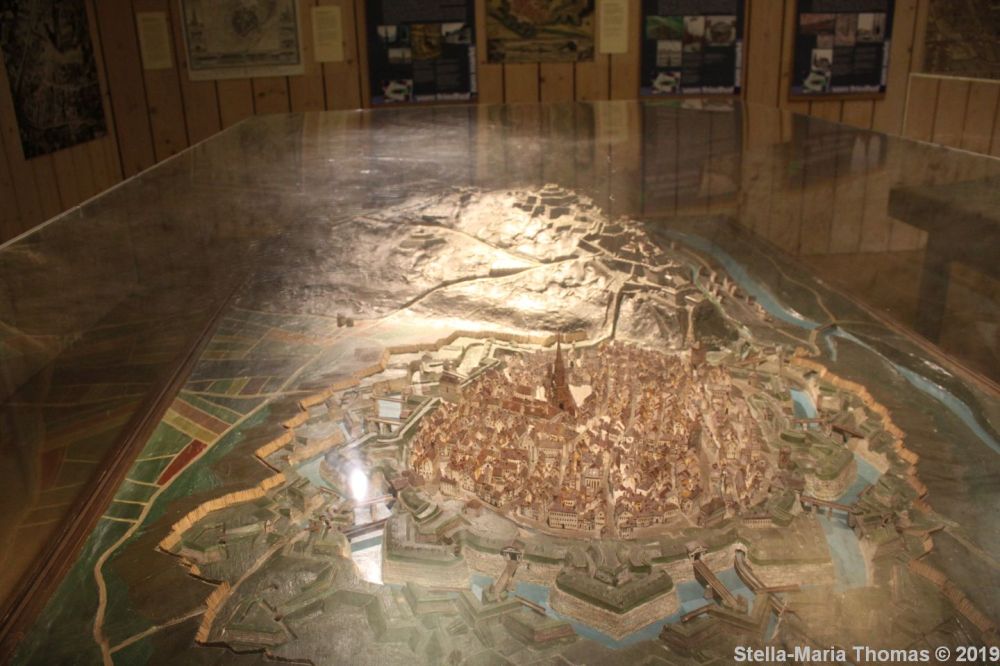
It’s a lovely late Baroque building with a cast-iron two-story spiral staircase and an artfully decorated mezzanine crowned by an allegorical ceiling fresco executed by the home owner and painter. One of the stranger items on show is a stained glass window purporting to show Berthold Schwarz, (possibly 1310-1388), an alchemist who it is claimed introduced gunpowder to Germany. Whether that is true or not, no one really knows, though it seems highly unlikely to me.

The winter garden was also open, containing four allegorical figures, by Wentzinger, representing the four seasons. I particularly liked Winter.

We finished up in the museum and then headed back to the cathedral as it was now after 1 o’clock and we could now get into the oldest part of the building, well as long you didn’t mind handing over a couple of Euro to do it. It was well worth it! The section that this gives you access to ranges from the early 13th Century (the Chapel of Saint Nicholas, which is currently not accessible) to the 16th Century (the choir). Of particular interest to us was the other particularly impressive altarpiece, in the University Chapel, which was where professors were interred up until the 18th Century. This altar is by Hans Holbein the Younger and depicts the birth of Christ.

All of these are tricky to get photos of, because they are behind grills and railings, but I was able to push the camera through the gaps and vaguely aim it at the work. It seems to have worked OK, though it wasn’t easy. Also of great interest was the Villinger-Böckling chapel, where the altar of Saint Anne is the work of the Master HL. While it’s much smaller than the Breisach altar, it’s equally stunning in terms of detail and craftsmanship.

In need of a break, we headed outside and across to the Alte Wache. This is one of the few intact 18th Century buildings in the city and it came through the Second World War pretty much unscathed. It was the headquarters of the Austrian guard, but is now the House of Badische Wines, representing the wine growers who oversee the 15,000 hectares of vineyards that Germany’s third-largest wine-growing region supports. Because it was raining we had a bit of difficulty finding a table, but one of the lovely staff member suggested that we try for the one table on the upper floor. It was empty so we snagged it, and I bought us a couple of glasses of Moosmann wines, a 2018 Grauburgunder Kabinett Trocken and a 2018 Famoos Weissweincuvée Trocken.

They were both so good that on the way out I stopped and asked for contact details of the vinemaker. I had plans to stop there in the morning and add a couple more boxes of wine to our haul. After that we meandered down a series of picturesque streets, and eventually found the Augustiner Museum. We got there by way of the Schwabentor, which sat on the salt route, one of the most important trade routes in the Black Forest. It is said that a Swabian salt merchant once traveled one of these routes to Freiburg, having fallen in love with the city on a previous trading expedition. He brought with him barrels full of money, which he intended to use to buy Freiburg, but the citizens laughed at him and mocked his idea, especially when he opened the barrels and found his wife had replaces the money with sand and stones before he set off. Since the 17th Centur, the salt merchant and his wagon have been depicted on the inside of then gate, while Saint George, the partron saint of the city can be seen on the outside.

The Augustinerplatz itself is one of the central squares in the old city and was the location of an Augustinian monastery that has been the Augustiner Museum since 1921. Built in the 13th and 14th Centuries, the monastery became Germany’s first municipal theater in 1823 and then sifted to being a museum. The collection covers the Middle Ages to the Baroque era, with what was the nave of the church now used to display the prophets and gargoyles from Freiburg Cathedral to great effect.

You can also get a birds eye view of a massive Dominican altar from the 15th Century, along with a series of smaller medieval stonework.

There are also stained glass windows on display in the same section of the building.

With medieval painted panels all over the place, this was a surprisingly good museum for its size.

In addition there was an exhibition in the basement entitled “Schwarzwald Geshichten” (Black Forest Stories) which we both found far too cloying and idealised, with the exception of a couple of portraits, including this one by Franz Xaver Winterhalter.

After we had done we made a detour round the back of the Augustinerplatz to find the waterway that runs along the backs of the buildings. It was all rather pleasant, although grey. This area is known, inevitably, as “Little Venice” and was once home to craftsmen and tradesmen. It was formerly known as the “Schneckenvorstadt”, or Snail District, probably because of the small spiral staircases in the houses and shops. The water flowing through is diverted from the river Dreisam, and supplied the millers, tanners and fishermen with what they needed to make a living. A sophisticated system of canals diverted the water to their doors, starting at the “island” and its oil mill, and flowing through to the Fischerau and the Gerberau. There’s a rumour of a sightings of a crocodile here since 2001 but we didn’t find it!

When the tram lines were being planned there was threat to demolish the Schwabentor and the Martinstor, the only two surviving medieval city gates of the five. Luckily, the mayor at the time had other ideas, and wanted to highlight the importance of the two 13th Century towers. Instead of demolishing the Martinstor, the city tripled its height, from 22 to 63 meters, add a 15th-century style turret and created an opening large enough for the trams to pass through. Martinstor had been flush with the city walls with a 12 metre wide moat beyond it. It’s intimidating enough without a moat so I can’t imagine how effective it was in its heyday.

In the 16th and 17th Centuries Freiburg was the scene of a major witch hunt and there is a memorial to three of the women, Anna Wohlffartin, Catharina Stadelmennin and Margaretha Mößmerin, who were all widows of councillors, and who were beheaded and burned during the first wave of persecutions. They are remembered in honor of all the victims, even though this tower was used as a debtors’ prison, not as a place to incarcerate the unfortunate women.

We kept on walking, heading for the main station, because we knew we were going out later and would need to drive as the restaurant was half an hour away. We did allow ourselves to be lured into Saint Martin’s church, which seemed to have some pretty interesting historic bits, but we couldn’t find any information about it.

It was only later that I was able to discover that it was the former Franciscan Church, and was allegedly the site where Friar Berthold Schwarz discovered gunpowder, as depicted in the Wentzingerhaus Musuem. It is said that he ground together saltpetre, sulphur and charcoal and then left the mixture on top of the stove. Luckily for him he was not in the room when it exploded. This is highly unlikely though it didn’t stop the town putting up a monumemt to him in 1851 on what is now the town hall square.

We were pretty much done now and only had the energy to walk through the Colombi Park garden. This was established by the wonderfully name Countess Maria Antonia Gertrudis von Zea Bermudez y Colombi, who built a house for herself on the site of the former French bastion. The Freiburg architect Georg Jakob Schneider built the manor house between 1859 and 1861 in the Gothic Tudor style of the English Middle Ages. Alongside it is a garden full of vines, whichy sadly seems to be a regular target for idiotic vandalism.
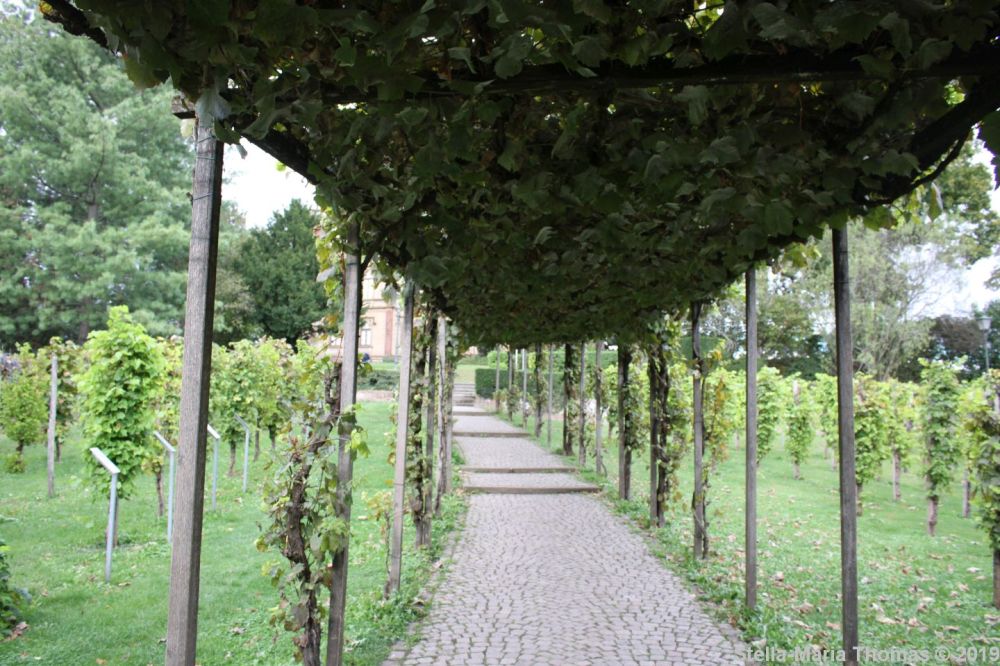
We caught a very busy train back to Denzlingen, and just missed the bus to Glottertal so ended up having to wait 25 minutes. Back at the ranch I left Lynne to shower and was sent up the road to the local wine cellar to buy some wines, emerging from Roter Bur with three bottles of 2015 Spätburgunder Rotwein Qualitätswein trocken Glottertäler Eichberg Réserve, three of 2015 Spätburgunder Rotwein Qualitätswein trocken Barrique Glottertäler Eichberg, 3 of the 2017 Spätburgunder Rotwein Qualitätswein trocken Alte Rebe and 3 of the 2016 Spätburgunder Rotwein Kabinett trocken Glottertäler Eichberg. I was also in possession of a white that had been aged in oak barrels and a jar of wine jelly which I was given!








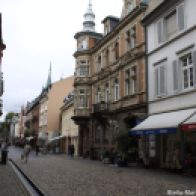















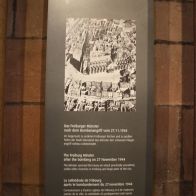












































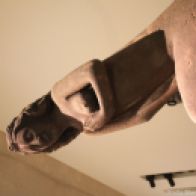
















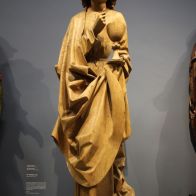

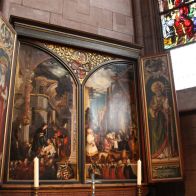

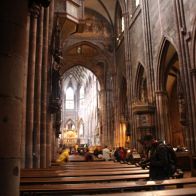



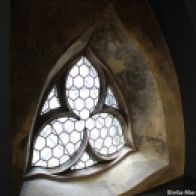







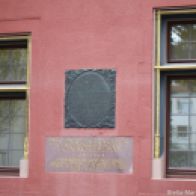

































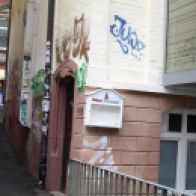








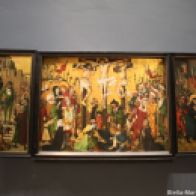





















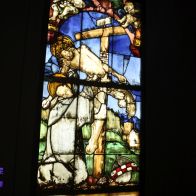














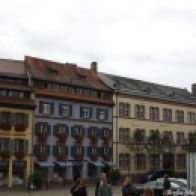




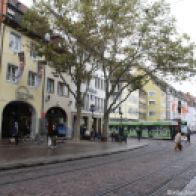





















































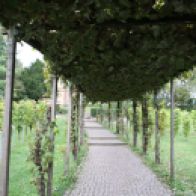





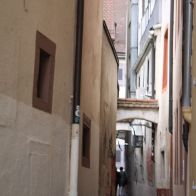




































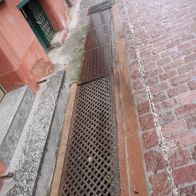










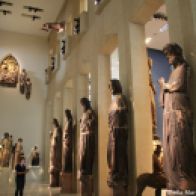



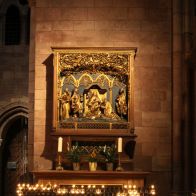






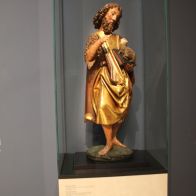











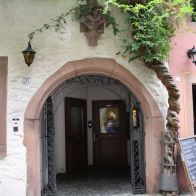








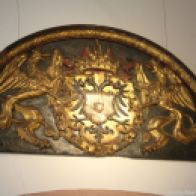


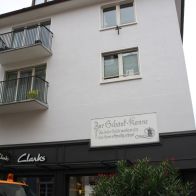




















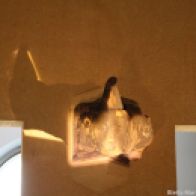




It is a lovely city. We visited several years ago in a snow blizzard. Thanks for the memory nudge!
LikeLike
Blimey. That must have been a bit odd.
LikeLike
It was lovely. We were staying in Offenburg and all of the Black Forest was under several feet of snow.
LikeLike
We have been to Freiburg. I love your church photos. They are wonderful. Thank you.
Have a good day!
LikeLike